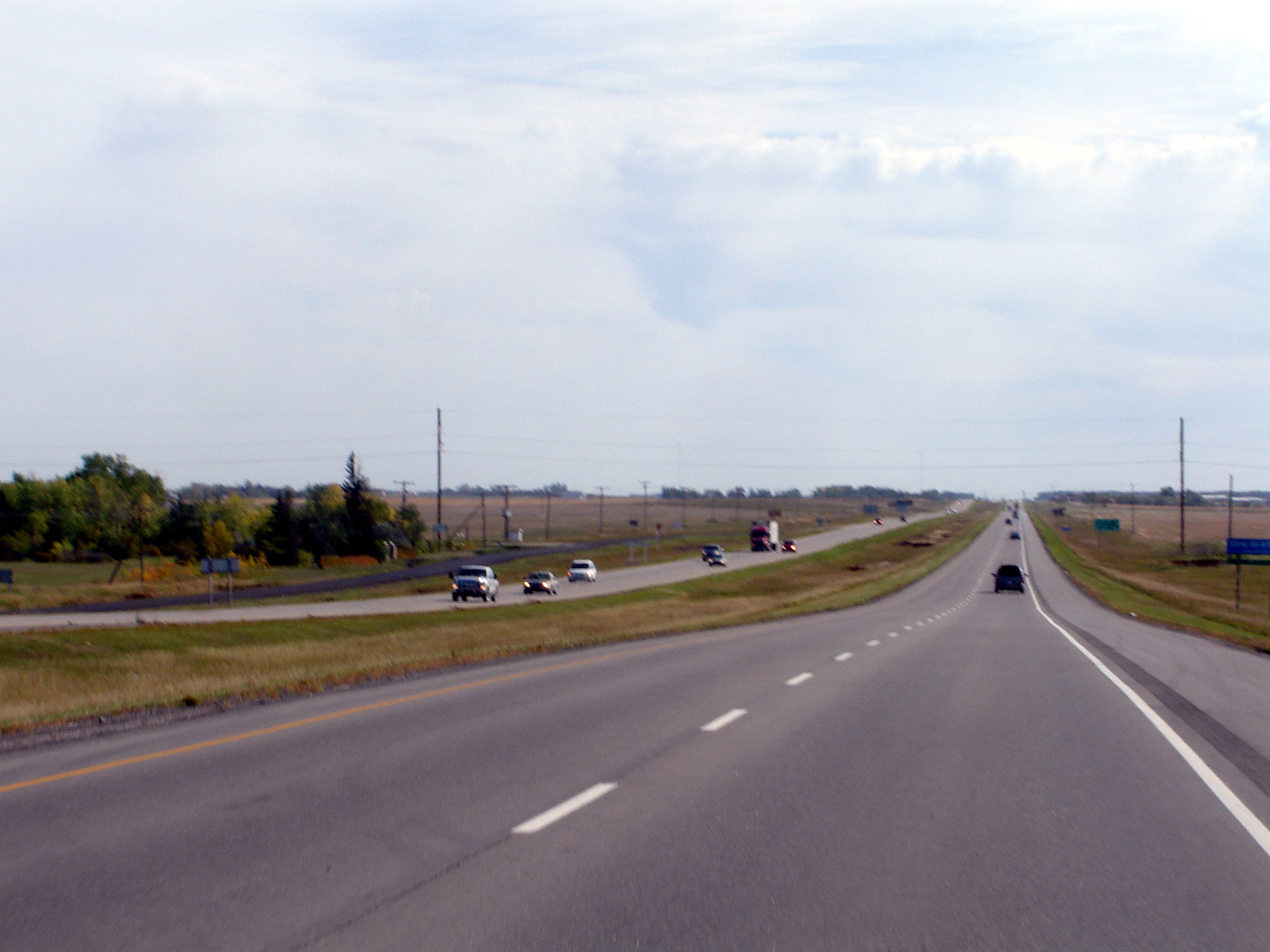|
Freeways In Saskatchewan
This is a list of Saskatchewan's highways: Only Highways 1, 2, 5, 6, 7, 11, 12, 16, and 39 contain sections of divided highway. Speed limits range from 90 km/h (55 mph) to 110 km/h (70 mph). Saskatchewan is the only province bordering the United States with no direct connection to the Interstate Highway System. Named routes * Can Am Highway *Circle Drive *Hanson Lake Road * Little Swan Road * Louis Riel Trail * McBride Lake Road *Northern Woods and Water Route *Ring Road *Red Coat Trail * Regina Bypass *Saskatoon Freeway * Saskota Travel Route * Trans-Canada Highway * Veterans Memorial Highway * Yellowhead Highway Primary (1–99) These are primary highways maintained by the provincial government. Almost all of these highways are paved for most of their length. Highways 1, 11, and 16 are the most important highways and are divided highways for much of their lengths, with some sections at expressway or freeway standards. ... [...More Info...] [...Related Items...] OR: [Wikipedia] [Google] [Baidu] |
Saskatchewan Highway 1
Highway 1 is the Saskatchewan section of the Trans-Canada Highway mainland route. The total distance of the Trans-Canada Highway in Saskatchewan is . The highway traverses Saskatchewan from the western border with Alberta, from Highway 1, to the Manitoba border where it continues as PTH 1. The Trans-Canada Highway Act was passed on December 10, 1949. The Saskatchewan segment was completed August 21, 1957, and completely twinned on November 6, 2008. The speed limit along the majority of the route is 110 kilometres per hour (70 mph) with urban area thoroughfares slowing to a speed of 80–100 kilometres per hour (50–62 mph). Portions of the highway—the section through Swift Current, an section east of Moose Jaw, and a section between the West Regina Bypass and Balgonie—are controlled-access. Highway 1 serves as a major east-west transport route for commercial traffic. It is the main link between southern Saskatchewan's largest cit ... [...More Info...] [...Related Items...] OR: [Wikipedia] [Google] [Baidu] |
Red Coat Trail
The Red Coat Trail is a route that approximates the path taken in 1874 by the North-West Mounted Police in their March West from Fort Dufferin to Fort Whoop-Up. Route description A number of highways in southern Manitoba, Saskatchewan, and Alberta roughly follow the original route. In Alberta, the trail follows Highways Alberta Highway 3, 3, Alberta Highway 4, 4, Alberta Highway 61, 61, Alberta Highway 889, 889, and Alberta Highway 501, 501. In Saskatchewan, Saskatchewan Highway 13, Highway 13 is designated as Red Coat Trail. The travel corridor from the Manitoba–Saskatchewan border to Winnipeg follows Manitoba Highway 2, Manitoba PTH 2.Winnipeg: Established 1738 as Fort Rouge (fortification), Fort Rouge; renamed 1822 Fort Garry; incorporated in 1873 as the City of Winnipeg. Alberta Near Fort Macleod, the traffic volume is between 4,200 and 7,900 vehicles per day (vpd) according to the 2007 Average Annual Daily Traffic report which is quite consistent for the decade. The ... [...More Info...] [...Related Items...] OR: [Wikipedia] [Google] [Baidu] |
Manitoba
Manitoba ( ) is a Provinces and territories of Canada, province of Canada at the Centre of Canada, longitudinal centre of the country. It is Canada's Population of Canada by province and territory, fifth-most populous province, with a population of 1,342,153 as of 2021, of widely varied landscape, from arctic tundra and the Hudson Bay coastline in the Northern Region, Manitoba, north to dense Boreal forest of Canada, boreal forest, large freshwater List of lakes of Manitoba, lakes, and prairie grassland in the central and Southern Manitoba, southern regions. Indigenous peoples in Canada, Indigenous peoples have inhabited what is now Manitoba for thousands of years. In the early 17th century, British and French North American fur trade, fur traders began arriving in the area and establishing settlements. The Kingdom of England secured control of the region in 1673 and created a territory named Rupert's Land, which was placed under the administration of the Hudson's Bay Company. Rupe ... [...More Info...] [...Related Items...] OR: [Wikipedia] [Google] [Baidu] |


